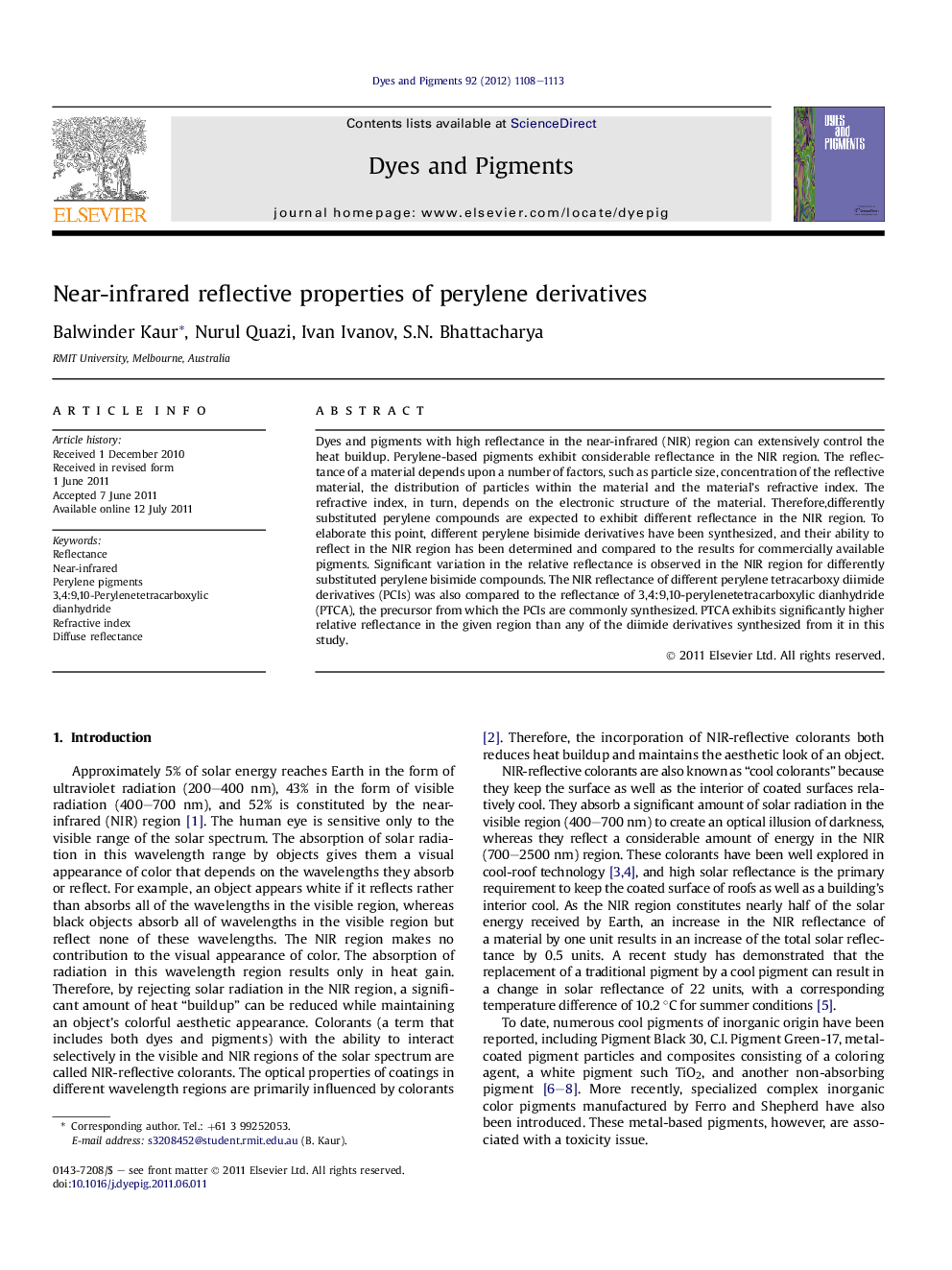| Article ID | Journal | Published Year | Pages | File Type |
|---|---|---|---|---|
| 177024 | Dyes and Pigments | 2012 | 6 Pages |
Dyes and pigments with high reflectance in the near-infrared (NIR) region can extensively control the heat buildup. Perylene-based pigments exhibit considerable reflectance in the NIR region. The reflectance of a material depends upon a number of factors, such as particle size, concentration of the reflective material, the distribution of particles within the material and the material’s refractive index. The refractive index, in turn, depends on the electronic structure of the material. Therefore,differently substituted perylene compounds are expected to exhibit different reflectance in the NIR region. To elaborate this point, different perylene bisimide derivatives have been synthesized, and their ability to reflect in the NIR region has been determined and compared to the results for commercially available pigments. Significant variation in the relative reflectance is observed in the NIR region for differently substituted perylene bisimide compounds. The NIR reflectance of different perylene tetracarboxy diimide derivatives (PCIs) was also compared to the reflectance of 3,4:9,10-perylenetetracarboxylic dianhydride (PTCA), the precursor from which the PCIs are commonly synthesized. PTCA exhibits significantly higher relative reflectance in the given region than any of the diimide derivatives synthesized from it in this study.
► Relative reflectance of different perylene derivatives in the near-infrared (NIR) region is reported. ► Significant variation in the relative reflectance in the NIR-region is observed among different N,N′ disubsubstituted perylene-3,4:9 10-bis(dicarboximide)s (PCIs). ► 3,4:9,10-perylenetetracarboxylic dianhydride (PTCA) has shown significant higher reflectance in the NIR-region than any of the PCI synthesized from it in this study. ► All the 3,4:9,10-perylenetetracarboxylic bisiimide samples are thermally stable up to 330 °C.
